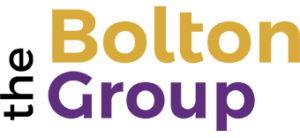Be the CEO Who Gives Gifts and Thanks
During the past two weeks, the business news has been dominated by tech companies that are laying off staff. Meta laid off 11,000 employees or 13% of their workforce. Twitter terminated the employment of 3,700, nearly 50% of its staff. A long list of other companies followed. Intel, Snap, Robinhood, Stripe, Salesforce, Lyft, Microsoft, Shopify, Netflix, HP and Coinbase rounded out the list of companies laying off 10% or more of their team members.
The news of layoffs in the tech sector strikes fear in the markets and in those outside of the industry, too. Meanwhile, unemployment remains at or near an all-time low. Most businesses are not laying people off but doing their best to meet the needs of employees and customers. Many CEOs are projecting an economic bounce back and predict 2023 will return to a more normal year. Outside of the tech sector, where most Americans work, is where the good stuff in our economy is happening, although it is rarely mentioned in the news.
One of my CEO clients in the medical device sector brought his top leadership team together last week to discuss their 2023 plans. Since he was hired just over a year ago, four of his eight direct reports are new to the company. Aware his team of leaders have been working hard learning the business, managing their responsibilities and building their credibility, he took them off-site for a few days to plan for the upcoming year and to recognize their contributions. It is a lonely journey most leaders walk, saddled with multiple demands and high expectations, yet rarely do they receive positive support and affirmation. He decided to change that.
His desire for his new team is not just to develop and execute the strategy, but to get to know one another better and build trust as they work together to create a great company.
During the last working session of the day, everyone wrote on a sheet of paper the name of each team member. Then they wrote three gifts each person brought to their work. These were not technical skills or work competencies; they were personal qualities demonstrated by the individual. At the bottom of the sheet, they wrote what they would miss if that person was no longer on the team.
Ten minutes later, each person received seven pages of their gifts as perceived by their teammates. They took a few minutes to each read their gifts silently, then they shared what they heard with the full team.
After each individual shared “What I heard”, their colleagues elaborated on the gifts and unique qualities that person brought to their work, sharing examples and a story or two. Many smiles were shared. After everyone took their turn, to take it a step further, they reflected on what they heard, what they saw as their own special gifts and wrote and shared their unique gift statement.
Here is a sample of the gift statements shared:
- I use my gift of enthusiasm, joy and a positive attitude, to lift people up, encourage and support others, to see the bright side and find a silver lining.
- I use my passion and ability to connect with others, to create an environment that creates an opportunity for people to achieve excellence and enjoy the experience that leads to results.
- My gift is passion and care for people. I use my gift to serve others, to increase confidence, so they can achieve increased fulfillment and impact in their lives.
- I use my gift of a deep caring for people – to engage, support, serve and impact others – helping them elevate.
As they exited, the CEO thanked each team member for their willingness to lean in and work together. He said, “You’ve now landed on your unique gift statement, the uniqueness that no one else in the world brings. What makes you special. Let’s now bring our gifts to all the opportunities and situations that come our way.”
What do you think the collective mood of the team was walking out of the room that afternoon?
One team member stated, “I’ve never been through a process like this, giving and getting gifts from your colleagues and leader. I’ve worked with some companies for many years and never heard what others thought my gifts were. I feel tighter with this team already than the other teams I have been part of.”
Another said, “While it was at first a little uncomfortable to be recognized by my peers and boss in such a way, I am grateful you appreciate me for who I am. I am so happy to be part of this team and company. You make it safe and motivating. Thank you for your encouragement and letting me be me.”
As they wrapped up, high fives, smiles, thank yous and hugs were abundant. An uplifting and affirming afternoon. The team was tighter, more supportive and trusting at the close of their meeting. Each person felt accepted, encouraged and inspired.
Is the collective emotional state of your top team, CEO, like this team’s? Do you invest in building relationships, trust and commitment? If not, why not? What’s the price you’ll pay if you aren’t the CEO who gives your team gifts and thanks?
Intentionally building relationships, trust and commitment secures the foundation from which you build and grow your company. The bonds and tight relationships serve as the cement that holds the blocks of the foundation – the people, strategies, goals, products, execution and results – together. A small investment in time and effort can yield a tremendous return on investment.
As we celebrate Thanksgiving and the holiday season, won’t you be the CEO who is grateful for your team and gives gifts and thanks?



